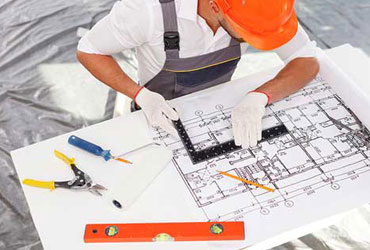The structured cabling is an element of telecommunications. Structured cabling is defined as a cabling infrastructure for the campus or any building which comprises of various smaller elements of specific standards, all structured.
Benefits of structured cabling
There are various benefits provided by structured cabling. A properly installed and designed structured cabling system will provide such cabling infrastructure which
- Maximizes system availability
- Has the flexibility to accommodate changes, additions, and moves
- Delivers predictable performance
- Future proofs use of this cabling system
- Provides redundancy
Subsystems of structured cabling
There are six subsystems introduced in the structured cabling.
- Entrance facilities is the point where the network of telephone company ends and gets connected to the wiring at customer’s location.
- Equipment and wiring consolidation points are housed in the Equipment Rooms where users inside campus or building are served.
- Backbone cabling is a subsystem of structured cabling where inter-buildings and intra-building cable connections are formed in between the equipment rooms, telecommunications closets and the entrance facilities. Backbone cabling comprises of main and intermediate cross-connects, transmission media and the terminations at these locations. The backbone cabling system is mostly used in the data centers.
- Horizontal Cabling can be considered as plenum cabling or the inside wiring which connects the telecommunications rooms to different work areas on the floor and individual outlets, mostly through the ceiling, conduits or the wireways and spaces between each floor. There is a horizontal cross-connect where the horizontal cabling is connected to a punch up block or patch panel, which is in-turn connected to main distribution facility via backbone cabling.
- Telecommunications enclosure or telecommunication rooms connect backbone cabling and horizontal cabling.
- The end-user equipment is connected to the outlets of horizontal cabling system via work-area components.
Horizontal Cabling System Structure Guide
Horizontal cabling system extends to the horizontal cross-connect in telecommunications room from the telecommunications outlet of the work area. This cabling system comprises of an optional consolidation point, telecommunications outlet, mechanical terminations, horizontal cable, patch cords and the transition point connector.
Fiber optic cable
Fiber optic cable is such a network cable which is made up of strands of glass fibers contained inside a perfectly insulated cabling. These cables are very useful for the long distance and high performing telecommunications and data networking. If compared with the wired cables, the fiber optic cables are able to provide a higher bandwidth and also more distance in terms of transmitting data. Most of the world’s internet is supported by fiber optic cables and so are the telephone systems and the cable television.
Category 6 cable
There are many computer networks of the modern age too which still depend on cables to be used as a physical medium so that the devices can transfer data to the computer. There is a different standardized type of network cables for this purpose, each having its own. Cat 6 or category 6 cable is a standardized twisted pair cable for Ethernet and other network physical layers. This cable is backward compatible with category 5 / Cat5e and the category 3 cable standards.



